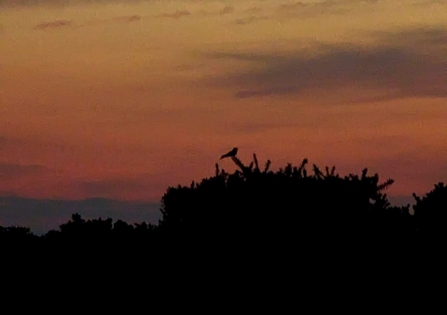Imagine, you’re walking through the New Forest on a warm summer evening. You suddenly hear a soft churring. It stops and you think nothing of it. But then! Something glides just above your head, perhaps a merlin or a small kestrel. If this sounds at all familiar, then you may have encountered a European Nightjar (Caprimulgus europaeus). When I personally had this experience, I was utterly fascinated by their behaviour and they quickly became a favoured bird species. Being confined to heathland or young conifer forest, their range within the UK is limited. However, the New Forest boasts residency for nearly 10% of the UKs territorial male population.
Being largely crepuscular, they are mainly witnessed at dawn and dusk. Elusive and stealthy, these mysterious birds put on a fascinating display of aerial aerobics. Seen gliding a few metres above the ground, spending moments hovering before swooping in a figure of eight (see video below). They may be catching invertebrates on the wing, warding off fellow males or performing to observing females. Males and females can be difficult to distinguish without accompanying gendered behaviours, however, males have white markings on the underside of their primary wing feathers. What’s more, a sloppy ‘smack’ is also indicative of a male performing a mating display. The noise is created from their wings being clapped together in flight and can also be used to fight off male intruders and win female affection. The illusion of their small bird of prey silhouette is created by the ‘V’ position of their wings and fanned tail feathers when in the air.


